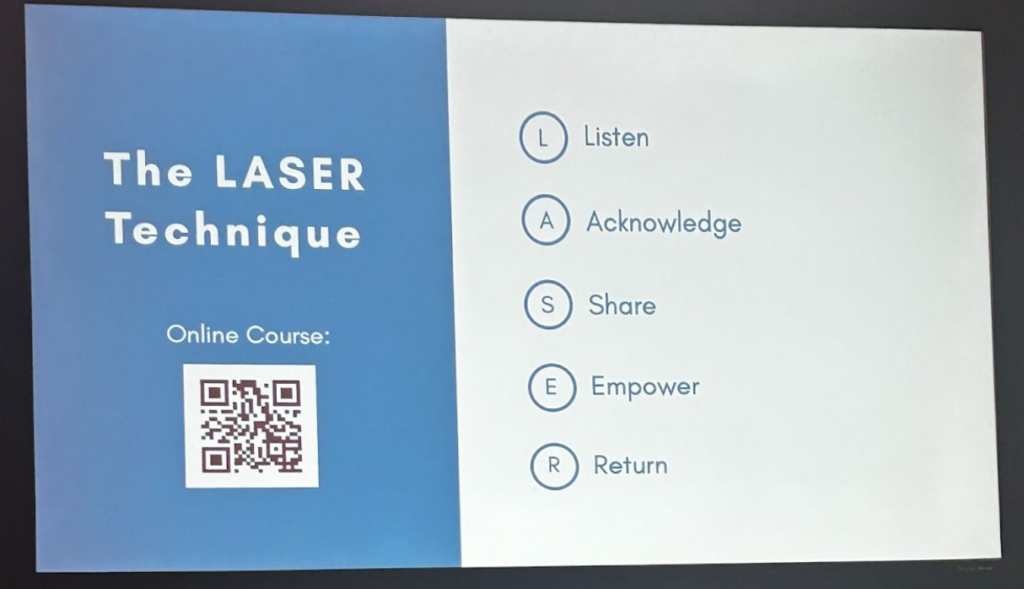by Foster Milburn
As students, we often question what to expect once we enter the workforce, particularly internships. The classes we take in undergrad help us contextualize topics in which we major, but extracurriculars can only prepare us so much for the workforce once we enter it. How can we know what we value in a workplace when we don’t know what it means to be part of a corporate environment?
You have probably seen some of her books regarding empathy in the workplace. She is an advocate for unheard voices, including those affected by the Pulse nightclub and South Carolina AME church shootings, and an attorney who guides the Justice Department through responding to trauma victims. She is Katharine Manning, and she is an author, professor, and attorney.
Through what she refers to as “The LASER Technique,” Manning offers a five-step process for a compassionate response to employees with trauma for managers and anyone overseeing a group of people in the workplace.

The first step is Listening, Manning advises, “don’t interrupt and don’t problem solve; just let [the employee] speak. Make room for that.”
The second step is Acknowledge – “it is straightforward: ‘I’m sorry,’ or, ‘that sounds difficult.’ It lets [the employee] know you heard them, and they are likely to listen to what you share next,” Manning said.
The third is Sharing information, “John F. Kennedy said in times of turbulence it is more accurate than ever that knowledge is power,” Manning said. “When we share, we get a little of that power back.”
Step four is Empower. This step is about recognizing that the person in trauma has their own journey to walk. She advises, “you must set boundaries for yourself, but within that, you can give [the employee] tools to take with them on that journey.”
For example, if the company offers mental health resources, share those with the cohort. Affirming boundaries while offering resources – such as 988– the U.S. new national hotline for suicide and mental health crises –creates a comfortable space for the individual while you guide them in the proper direction.
Step five – Return. By setting boundaries, you’re caring for your mental health while helping the individual facing trauma. It would help if you watched for yourself, and Manning’s advice for that is investing in self-care. “I do a little bit of yoga and meditation every morning. Just do something every day that gives back to yourself,” she said.
Affirming boundaries while offering resources – such as 988– the U.S. new national hotline for suicide and mental health crises –creates a comfortable space for the individual while you guide them in the proper direction.
This is how we respond, but next is making sure that the people that come to us in the first place are encouraged to do so. “People underestimate how valuable it is to check in on the people in our lives,” Manning said.
From highlighting common incidents such as workplace violence and employee safety, to recognizing needs and developing resources such as miscarriage leave, gender-affirming medical care, or domestic violence, sharing resources is vital. “Do you have these policies within your organization? If not, think about that,” Manning said.
This is the second pillar of trauma-informed workplaces. Manning advises, “make sure you’re getting input from those affected – don’t create a phenomenal gender-affirming care policy without first talking to transgender individuals.” The dormant items will not do anyone any good if they’re sitting on a shelf with no one discussing them.Her book, “The Empathetic Workplace,” describes other pillars in responding to trauma and distress amongst our coworkers and supervisors. Next month, she is launching a course diving deeper into making workplaces more empathetic, thus creating a healthier work environment for all employees. You can check out the website for more details.


